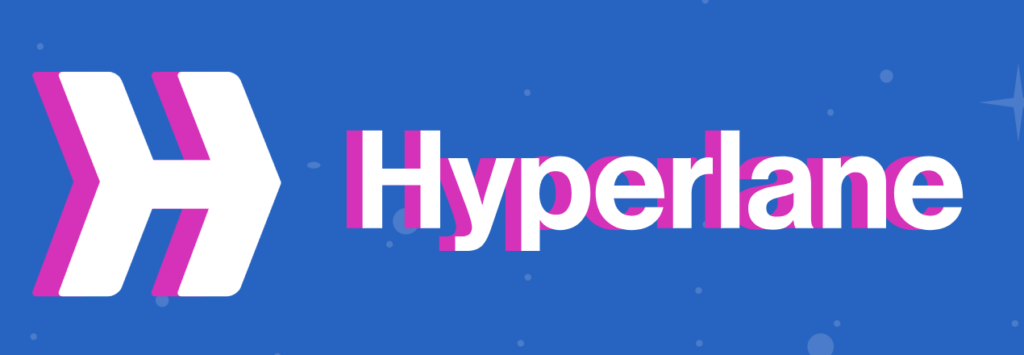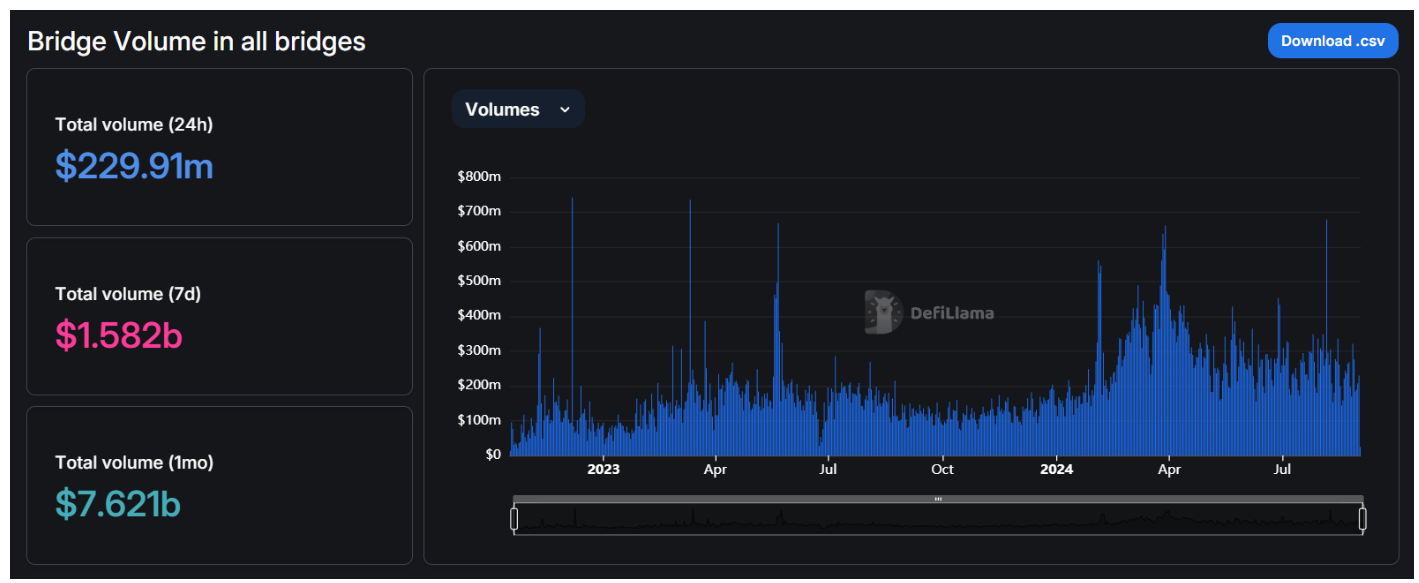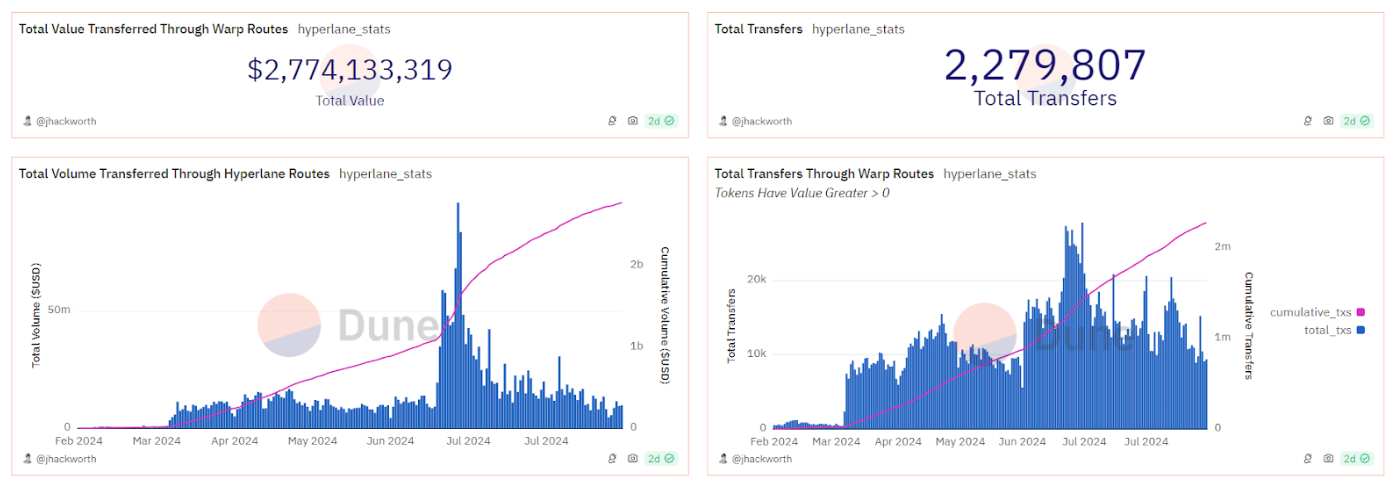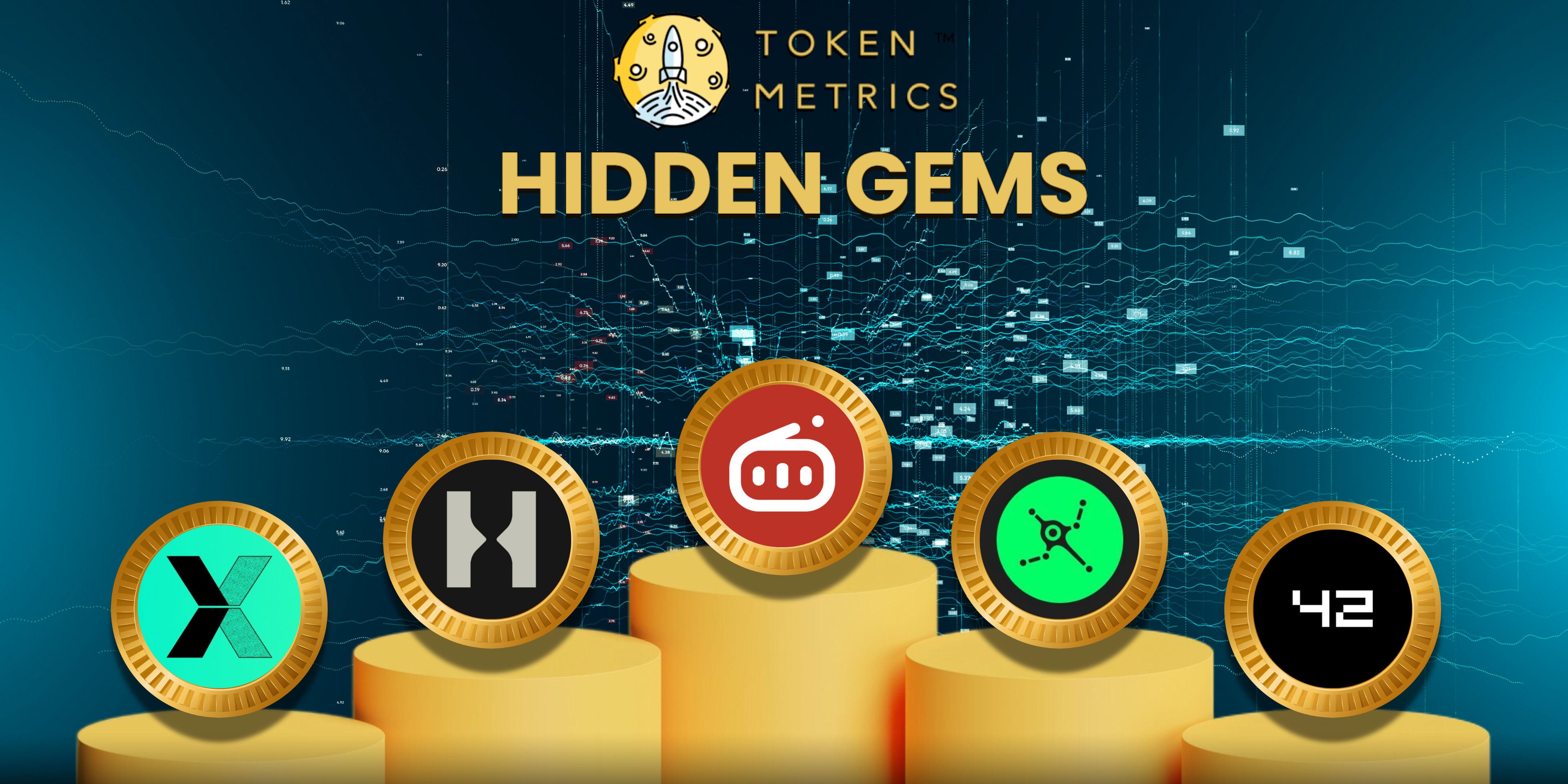Executive Summary

Hyperlane is a cutting-edge interoperability layer that enables permissionless and modular connectivity across various blockchain networks, such as Layer 1 blockchains, rollups, and application-specific chains. It supports seamless communication between these diverse ecosystems, allowing developers to create interchain applications with tailored security models. Designed with a focus on flexibility and modularity, Hyperlane distinguishes itself in the dynamic landscape of blockchain interoperability. Its deployment is open to anyone, enabling integration with any blockchain environment—a Layer 1 network, rollup, or app chain—facilitating seamless interaction with other chains where Hyperlane is active.
About the Project
Vision – Hyperlane aspires to be an open interoperability framework that enables seamless connections across all on-chain environments. It aims to serve as a universal interoperability layer accessible to everyone.
Problem – Achieving seamless collaboration between different blockchain networks has long been a significant challenge. Traditionally, developers seeking to connect their new blockchain with existing ones must undergo a lengthy and often uncertain process of obtaining permission from the teams responsible for managing these connections. This approach is often slow and can stifle growth, particularly for newer or smaller projects that lack substantial influence.
Solution – Hyperlane is redefining this process by introducing a new paradigm known as permissionless interoperability. This approach allows anyone to connect to any blockchain network without waiting for approval from a central authority or navigating through restrictive gatekeepers. By removing these barriers, Hyperlane opens the door to innovation, enabling developers to quickly and efficiently link their blockchains with others. This capability accelerates development timelines and fosters a more dynamic and interconnected blockchain ecosystem where creativity and experimentation can flourish without constraints.
A key feature of Hyperlane’s offering is its support for Modular Security, which allows developers to select and customize their security models to meet the specific needs of their applications. Unlike traditional methods that impose a rigid, one-size-fits-all security framework, Hyperlane’s modular approach allows developers to implement security measures that align precisely with their project’s risk profile and operational requirements. This level of customization is critical for creating robust and secure applications that can adapt to a rapidly changing digital landscape.
Market Analysis
Blockchain technology has experienced remarkable and exponential growth. It is currently valued at $2.6 trillion, and forecasts predict continued expansion. However, despite this success, the market faces a significant challenge in achieving seamless interoperability due to the complexities of existing protocols.
The cryptocurrency sector is rapidly expanding, with new blockchains and layers emerging daily, each designed to address specific use cases such as improving speed, enhancing flexibility, and reducing transaction costs across applications in DeFi, gaming, social platforms, and more. While these innovations drive the industry forward, they also create fragmentation, creating hurdles for developers and users. Tasks such as setting up new wallets, switching networks, and bridging blockchains and layers are often complex and have inherent security risks. These complications can limit the potential for growth, adoption, and the broader integration of blockchain technology into mainstream applications.

The total transaction volume across all bridges surpassed $7 billion in the past month, highlighting their essential role in the cryptocurrency industry. These bridges ensure the smooth operation and integration of various blockchain networks.
Hyperlane offers a unique solution to the interoperability challenges in blockchain technology through its permissionless deployment capabilities and modular security framework. Unlike conventional interoperability solutions, Hyperlane allows any user to deploy its technology across multiple blockchains without requiring permissions, democratizing access to interchain communication tools and fostering broader participation. This unrestricted deployment capability encourages innovation and reduces the dependency on centralized authorities, paving the way for a more decentralized and collaborative ecosystem.
Competitors
Hyperlane is not the first project to focus on blockchain interoperability. Several notable players have already entered this market and hold significant positions.
Other players in the space are –
Axelar – Axelar offers a decentralized cross-chain messaging platform that facilitates seamless EVM contract integration across multiple blockchains. Known for its ease of use, multi-chain compatibility, and scalable architecture, Axelar connects EVM and Cosmos chains with strong community and financial backing. Its infrastructure supports both core functions and application development, ensuring security through the Inter-Blockchain Communication (IBC) protocol and modular isolation. Axelar emphasizes decentralized governance through external validator checks and balanced voting.
LayerZero – LayerZero is a data messaging protocol designed for efficient cross-chain communication, enabling lightweight message transfers between blockchains. It features ease of development, cost-effective operation using off-chain oracles and relayers, and broad dApp applicability. Backed by significant investments, LayerZero supports 11 chains and includes tools like LayerZero Scan for transaction tracking. Its architecture relies on Endpoints, Oracles, and Relayers, ensuring secure and efficient transactions. However, it faces challenges related to decentralization and reliance on external actors.
Wormhole – Wormhole serves as a bridge connecting at least fourteen blockchains, including Ethereum and Solana, for cross-chain data and asset transfers through a decentralized guardian network. It enables connectivity between EVM and non-EVM chains with low-cost transactions verified by reputable validators. The protocol uses Proof of Authority, requiring majority approval from guardians to validate transactions, establishing itself as a reliable platform with strong institutional support.
Unique Value proposition
Hyperlane is strategically positioned to align with the ongoing evolution of the cryptocurrency ecosystem, particularly in terms of modularity and permissionlessness. This alignment enables Hyperlane to adapt effectively to the market’s dynamic needs. By focusing on these principles, Hyperlane addresses key challenges faced by other messaging protocols, which often struggle to balance flexibility and security.
Unlike its competitors, Hyperlane has made notable advancements in cross-chain communication and interoperability, where other protocols have encountered difficulties. Its modular architecture allows easy integration and customization, while its permissionless nature fosters broader participation and innovation. This approach not only enhances the protocol’s adaptability but also supports the diverse and evolving requirements of developers and users across the crypto space. Hyperlane’s commitment to these core principles ensures that it remains at the forefront of the industry, offering a robust and scalable solution that meets the demands of an increasingly complex blockchain environment. As the crypto ecosystem continues to grow and evolve, Hyperlane’s innovative approach positions it as a leading player in advancing cross-chain connectivity and interoperability.
Features
- User-Friendly API Integration: Hyperlane provides an on-chain API designed for easy integration into decentralized applications (dApps), enabling the seamless sending and receiving of interchain messages. Developers can connect to a pre-deployed smart contract and dispatch an interchain message in under five minutes.
- Local Security with Application-Specific Validators: Hyperlane allows applications to implement their own validator sets for additional security, complementing the protocol’s existing proof-of-stake system.
- Message Observability: Applications can monitor interchain messages and trigger actions upon their processing on the destination chain. The Hyperlane team plans to introduce an interchain message explorer to enhance message observability in the near future.
- Network Connectivity: As of September 2022, Hyperlane supports arbitrary message passing and cross-chain contract calls across seven networks: Arbitrum, Avalanche, BNB Chain, Celo, Ethereum, Optimism, and Polygon.
- Customizable Security: Users can select security modules that fit their specific requirements, including the option to use personal validators, set rate limits, and access up to $5 billion in economic security through the Hyperlane AVS.
- Efficient Bridging: With Warp Routes, Hyperlane facilitates fast and cost-effective bridging of any token, ensuring no-slippage connections.
How does it work?
- Install the Hyperlane System: Deploy the Hyperlane system on any supported virtual machine without requiring prior approval.
- Configure Security Settings: Utilize Hyperlane’s modular security framework to configure security settings. The platform employs Interchain Security Modules (ISMs) to ensure that messages sent to a destination chain are verified as originating from the source chain. Developers have the flexibility to customize the default ISM used by Hyperlane’s Mailbox to create application-specific security models tailored to their particular needs.
- Facilitate Asset Transfers with Warp Routes: Transfer assets between chains efficiently using Warp Routes, which eliminate the traditional token whitelisting requirements of conventional bridging technologies. Warp Routes enable seamless transfer of ERC20 or ERC721 assets between any connected chains without requiring permission, allowing for the establishment of transaction routes across multiple blockchain networks.
- Set Up and Manage Validators or Relayers: Set up and manage Hyperlane validators or relayers independently. Unlike traditional validators, Hyperlane validators do not form a network with other validators and submit transactions infrequently, with setups tailored for each source chain. Comprehensive guidance is provided for single-chain configurations.
Traction

Hyperlane is integrated with over 50 chains and supports more than 5 virtual machines (VMs), showcasing its extensive reach within the blockchain ecosystem. The platform has successfully established connections with key players in the cryptocurrency industry and continues to broaden its network. This widespread connectivity highlights Hyperlane’s pivotal role in enhancing interoperability across diverse blockchain environments.
With over $2 billion in total value bridged, Hyperlane has achieved a significant milestone, underscoring the robustness of its infrastructure and the strength of its user base. This substantial figure reflects the platform’s growing adoption and illustrates the trust and reliance placed on it by various projects and developers. Hyperlane’s ongoing expansion and impressive transaction volume position it as a leading player in the cross-chain communication landscape, reinforcing its commitment to facilitating seamless and secure blockchain interactions.
Team
Hyperlane was co-founded by Asa Oines and Nam Chu Hoai, who previously served as early engineers at the decentralized finance platform Celo, bringing valuable experience in blockchain technology and financial innovations. Kol, a key founding team member, formerly led venture capital operations at Galaxy, contributing his investment and strategic growth expertise to the company’s development.
Investors

Hyperlane secured $18.5 million in a seed funding round led by the crypto-focused investment firm Variant. The round also saw participation from several notable entities, including the crypto financial services firm Galaxy Digital, CoinFund, Circle, Figment, Blockdaemon, Kraken Ventures, and NFX.
Conclusion
Hyperlane aims to provide a secure infrastructure that empowers developers to build safer inter-chain applications. As an emerging player in blockchain interoperability, Hyperlane introduces a decentralized and scalable strategy. Its innovative modular messaging system, paired with a permissionless penalty mechanism, sets a new standard for addressing challenges affecting other messaging protocols. The platform has undergone several security audits, reinforcing its commitment to safety. Hyperlane offers developers a comprehensive messaging API and SDK, allowing for the easy development of applications that can be accessed from any blockchain. Hyperlane has achieved strong adoption and continues to grow its user base. By enabling interoperability between blockchains, Hyperlane aims to drive the future of interchain singularity — the point at which true interoperability across all blockchain networks is fully realized.
| Fundamental Analysis | |||||
| Assessment | |||||
| Problem | Moderate, somewhat persistent problem | 2 | |||
| Solution | Distinct, defensible solution | 3 | |||
| Market Size | Large market, significant growth potential | 3 | |||
| Competitors | High competition, but room for differentiation | 2 | |||
| Unique Value Proposition | Clear differentiation and value for customers | 3 | |||
| Current Traction | Solid traction, user engagement and retention growing | 3 | |||
| Unit Economics | Positive unit economics, with plans for further improvement | 3 | |||
| Tokenomics | No clear token strategy or poorly conceived strategy | 1 | |||
| Product Roadmap | Unclear or unrealistic product roadmap | 1 | |||
| Business Model | Proven business model with clear path to profitability | 3 | |||
| Go-to-Market Strategy | Basic GTM strategy, lacks detail or differentiation | 2 | |||
| Regulatory Risks | Minimal regulatory risk, strong mitigation and adaptability | 4 | |||
| Total | 62.50% | ||||





